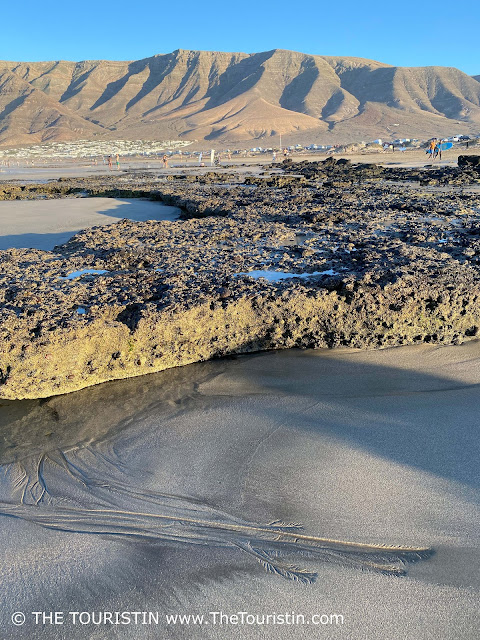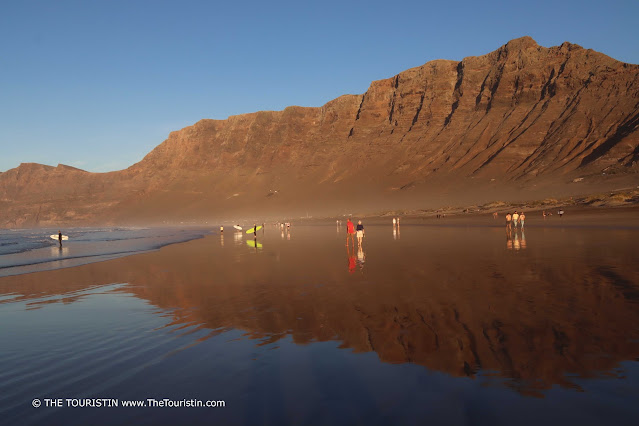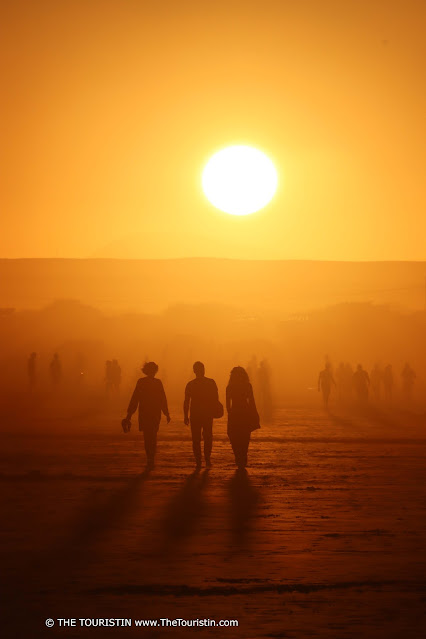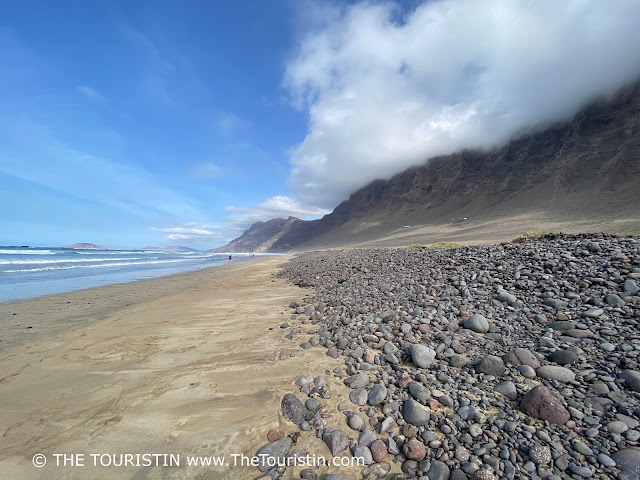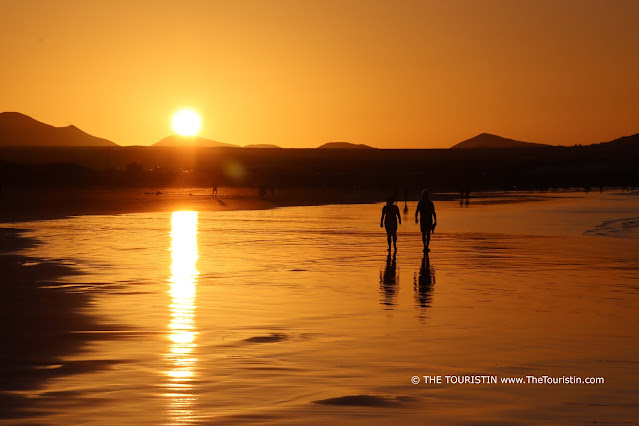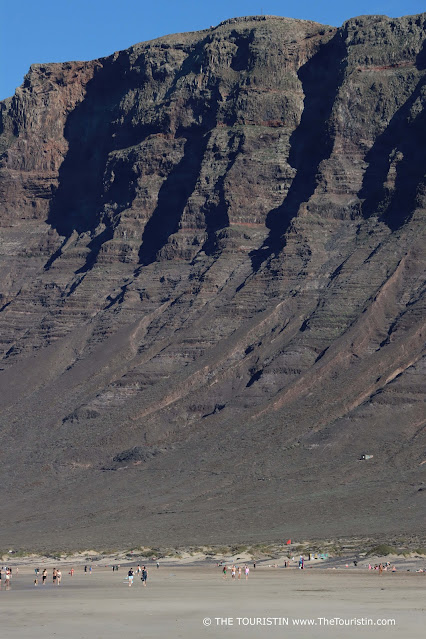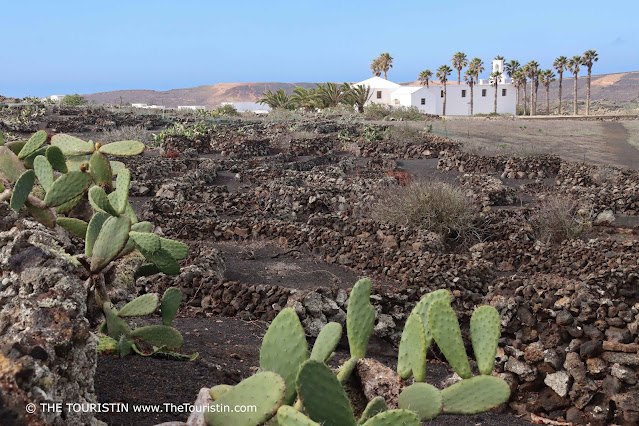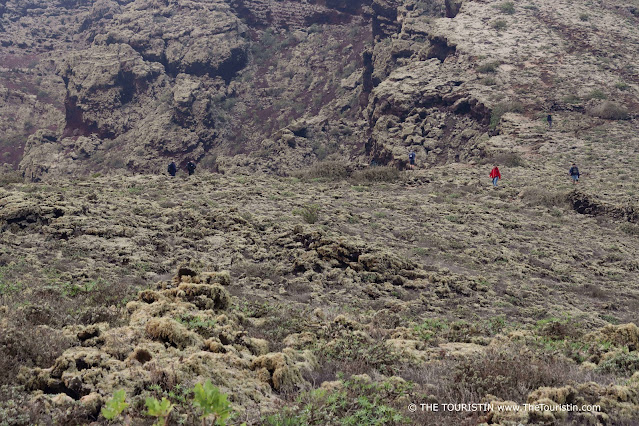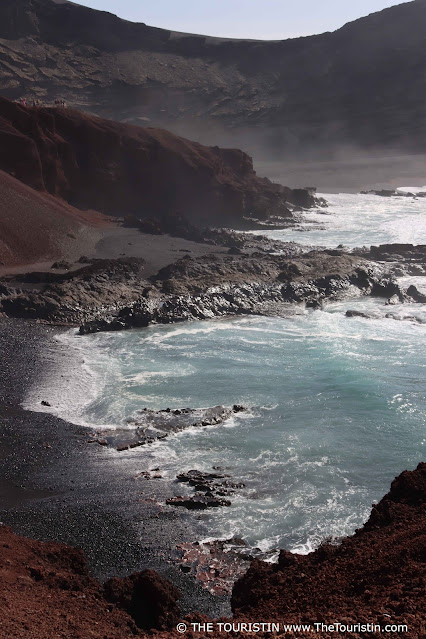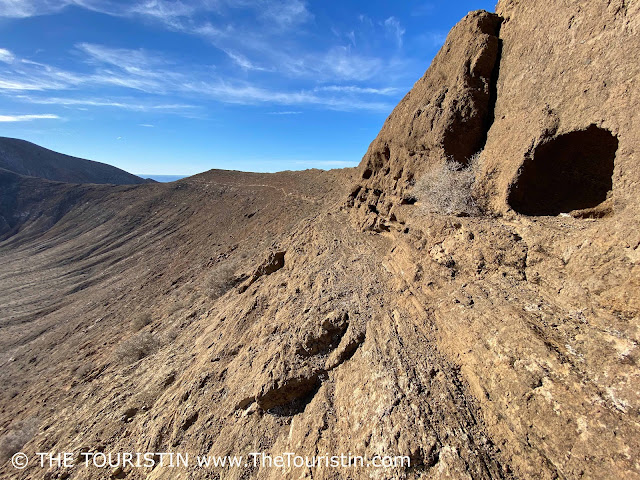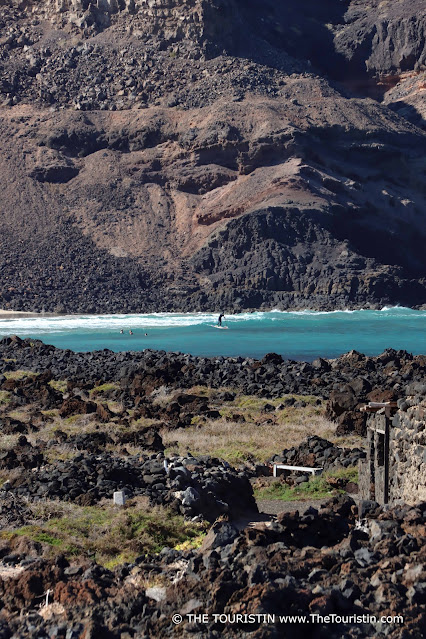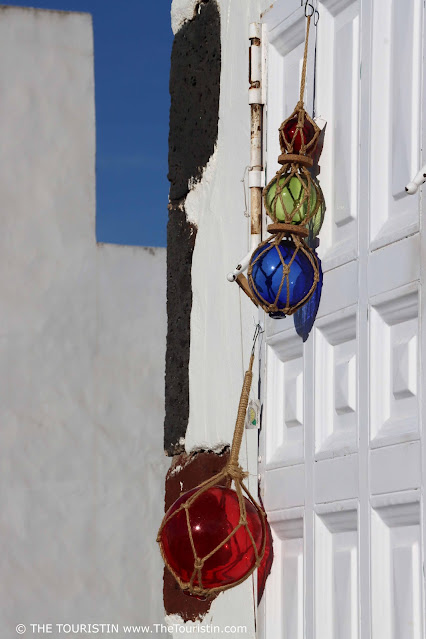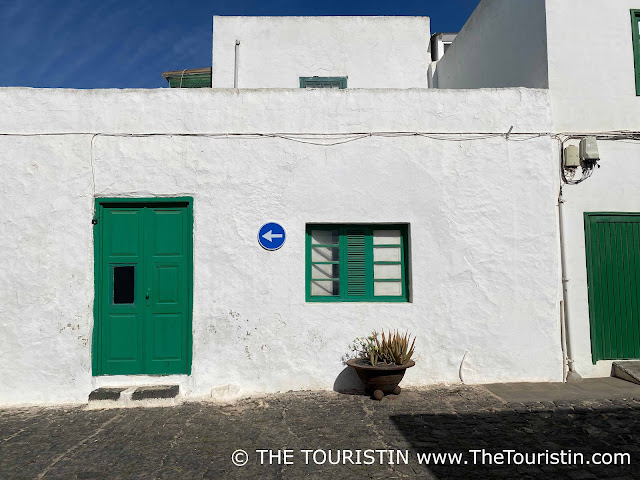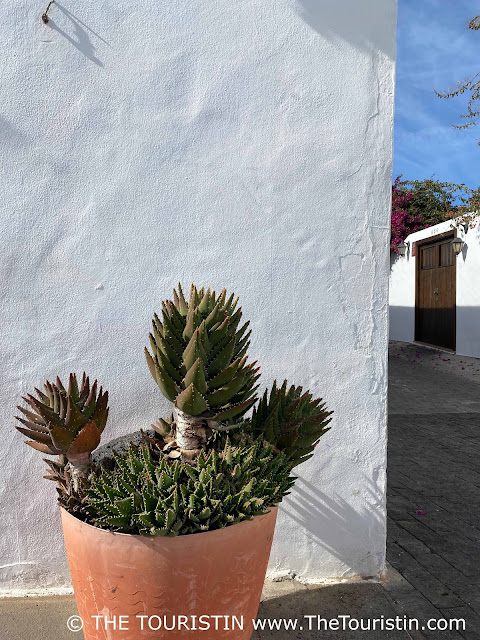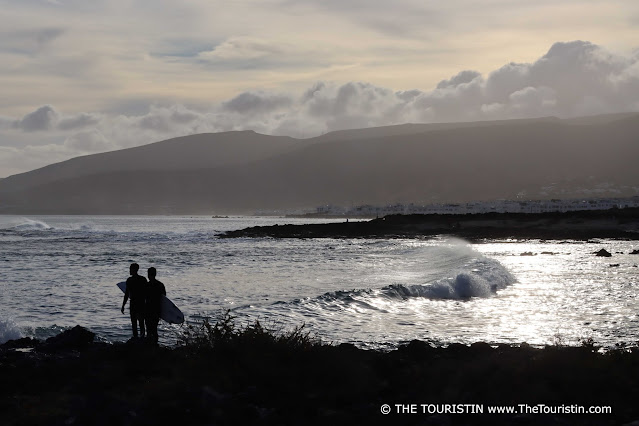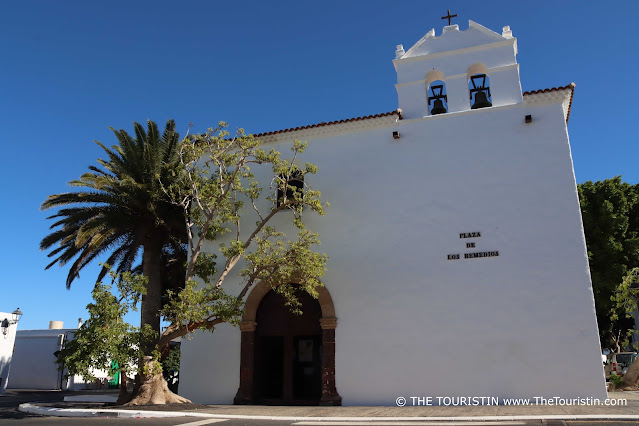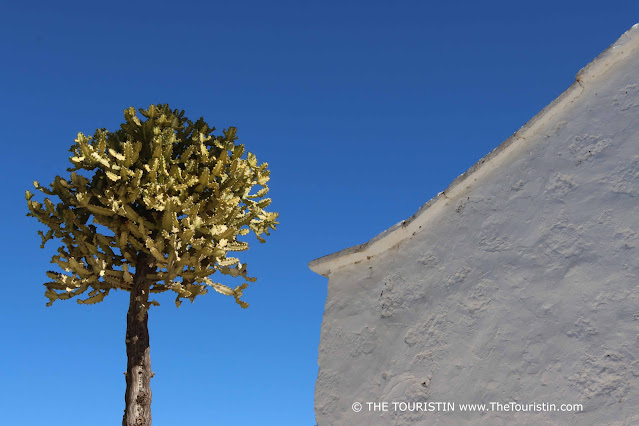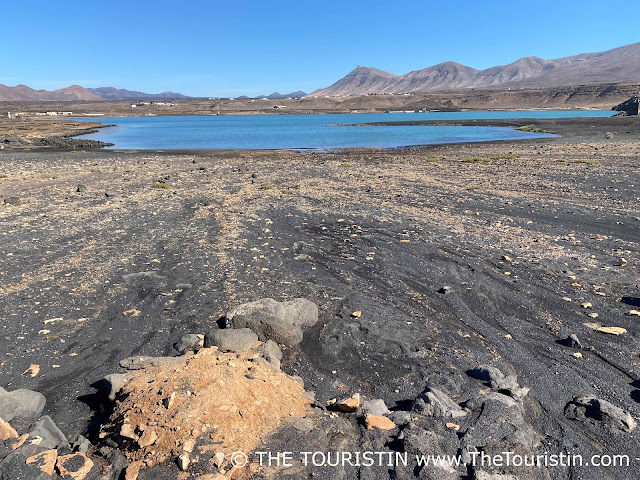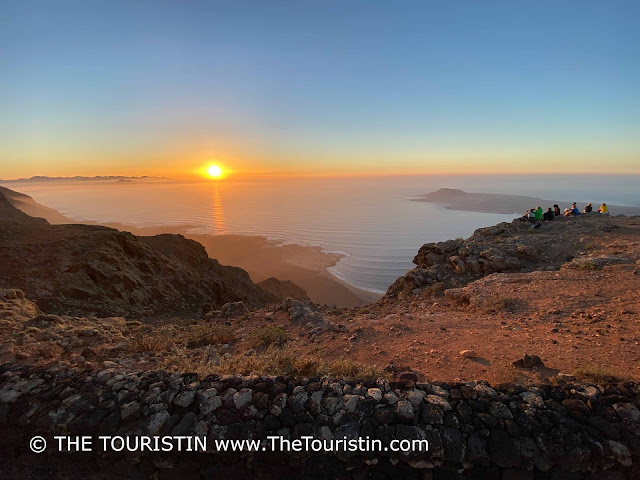In 1993, UNESCO declared Lanzarote a »World
Biosphere Reserve«. Thousands and thousands of tourists visit the northeastern
of the Canary Islands every year. They come for all-year-round warm weather and
sunshine and for
black, white, and golden sandy beaches. Lanzarote offers more than 300 days of sunshine per year. On average it rains
only 16 days in Lanzarote, that is per year, not per month. There is
more than magnificent beaches and superb weather: Pretty places to visit in Lanzarote.
The volcanic
eruption on Lanzarote between 1730 and 1736 covered the island with a thick
layer of lava and ash and changed the landscape forever. On Lanzarote, you can get lost in a through and through mystical
scenery. The landscape formed by severe magma eruptions is rather inhospitable.
Think of Lanzarote as starkly archaic and at the same time refreshingly
eccentric. A visit to Lanzarote is highly recommended.
Lanzarote - starkly archaic and refreshingly eccentric
One
side of Lanzarote is mass tourism, and the other is tranquillity. I divided
places to visit into two categories. One chunk is about places that everyone
wants to visit (the popular highlights). The other chunk is about places
that focus on spending time in the great outdoors.
Ten gorgeous and impressive places that are on every Lanzarote tourist's itinerary
Lanzarote is a special place and is loved by many. The island is easy to reach. With cheap flights from mainland Europe, Ireland and the UK, and the lure of all-inclusive hotel resorts, mass tourism is a thing on Lanzarote. Here are ten gorgeous and impressive places that are probably on every tourist's itinerary. These places are popular for a reason, and I recommend visiting all of them. Visit slightly off-season or in the early morning or in the late afternoon and try avoiding the biggest crowds that way. Have you actually been to Lanzarote if you haven’t visited these?
1. Jameos del Agua: Art centre built in and around a lava cave with a swimming pool that could easily be a favourite of the villain in a James Bond movie.
2. Fundación César Manrique: The museum located in the artist's former home in Tahiche tells about his vision and work on the island.
3. Mirador del Rio: Spectacular viewing point designed by Cesar Manrique.
4. Cueva de Los Verdes: When nearby Monte Corona erupted 3,000 years ago this cave was created by its lava flow.
5. Playa de Papagayo: Everyone goes wild for these secluded five beaches in a national park, Playa Mujeres, Playa de la Cera, Playa del Cangrio, Playa Papagayo, and Playa Puerto Muelas. Needless to say, slip, slop and slap. Bring your own water and food. To be reached via a gravel road.
6. Jardín de Cactus: 450 species of cactus and Cesar Manrique’s last project.
7. La Geria Wine region: Vines grow in small hollows in black lava ash. This designed landscape, so surreal as unique, has been announced a work of art by the Museum of Modern Art in New York in the 1960s.
8. Teguise Market: Come Sunday morning, you find everything from handicrafts to food.
9. Arrecife: With a population of about 61,000, the capital of Lanzarote is the commercial hub of the island.
10. Janubio Salt Flats: Here the salt is harvested from ocean water that
filters through volcanic rocks. Janubio, 35570 Spain.
Twelve places for Lanzarote visitors who love to spend time in the great outdoors
Here come further twelve places in Lanzarote that are just as magnificent to see. In most cases, there are no facilities of any kind at all. It is more about spending time in nature and looking at the stunning scenery.
1. Famara
The great outdoors. What is better than spending time outside? Only one thing is better. Spending time on a beach. Famara beach is six kilometres long. One has a view of the impressive Famara Cliffs. There is glorious soft sand and of course, there is lots of it. And of course, there is wind, sometimes lots of it and at other times none, as in none at all. That is the beauty of being outdoors. The weather is ever-changing. With the ever-changing conditions, think of cloudless days and bright blue skies. Cloudy days with slow travelling big clouds. Cloudy days with fast travelling fluffy clouds. Overcast days that become brighter in the course of the day. Foggy days that are slightly chilly. It also is different depending on what time of day you visit. Go at sunrise. Visit at sunset. At low tide, there are many rock pools, and you get to see sea birds. When there is no wind, the cliffs of Famara, plus all surfers and beachgoers mirror perfectly in the slightly wet sand. At high tide, you can walk through waves crashing on the beach. When the sun sets over the North Atlantic the whole area is, depending on the weather, bright orange for a few moments. Take deep breaths and enjoy the experience.
Please note: Swimming is not allowed because of
strong currents. Please make sure to stay between the flags and to watch out
for red flags. Caleta de Famara, 35558 Lanzarote, Spain.
2. Corona Volcano
Park next
to the pretty stark white church in Yé and hike through vineyards until you
reach the base of the volcano. The volcano's name is Corona. Yes, really that is its name, obviously it is not named after the virus though.
Let’s go back in time, a few thousand years. Volcan de la Corona together with
four others erupts along a rift that runs from the south-east to the north-west
of the island. So much lava flows everywhere that the size of the island nearly
doubles over the years. Wide spaces are covered in ash, not much grows here.
With time more volcanoes erupt, and et voila, there it is, the island is born. Hike
up the path that leads directly to the crater rim. This is where you will find yourself in a rugged grey, green, red-brownish landscape. There are dots of bright
green plants and something resembling moss, here and there. One can see the
volcano from pretty much everywhere in Lanzarote. A truly fascinating place. Start your hike in Yé, 35541 Lanzarote, Spain.
3. El Golfo
4. Caldera Blanca
Start the hike in Mancha Blanca. Plan a full day to go on this little hiking trip up a volcano. The trail is unpaved and hence uneven, you will come across a lot of sharp stones big and small. From Mancha Blanca, you will walk over a sea of lava. Please wear shoes that allow hiking.
Before you reach Caldera Blanca you pass Montaña Calderata, which is the little sister of Caldera Blanca. Walk inside, it is beautiful. Caldera Blanca - the white cauldron - was formed about one million years ago. It sits like an island in the black-blue-red-brown sea of small and big lava chunks. To reach the crater rim you have to overcome 300 metres in altitude - a narrow trail leads all the way up. You can just hike up to the rim, and it is fairly easy to reach (after about two hours from the starting point). From the rim, you can enjoy a grand view. Look over the 300 metres deep crater with a diameter of 1,200 metres. Gaze over the rock-strewn landscape, towards the Atlantic, a few other volcanoes here and there and white villages.
The exciting part starts when you start hiking along the rim. That hike is slightly tough. It can even get rough at times. Check the weather forecast before you leave and avoid hiking along the rim on a day with strong winds.
Carry enough water and bring your own snacks. Start the hike in La Mancha, 35560 Lanzarote, Spain.
5. Playa de la Canteria
Playa de la Canteria,
popular with everyone who loves high waves and nature, is located in the north
of Lanzarote. The about 300-metres long beach has soft golden-ish sand. When
you drive towards the beach you see a warning "Playa Peligrosa." The
scenery with the beach surrounded by sheer cliffs is simply fantastic. Due to the strong current, this
is not really the best beach for swimming. There are no lifeguards, and no
cafés or further facilities. A nature lover's dream. Check the tide before your
visit. You reach Playa de la Canteria via an unpaved road from Orzola either on foot or by car. Orzola, 35541 Lanzarote, Spain.
6. Volcán del Cuervo
This is the first volcano that formed after the
eruption of 1730. Can you imagine that the eruption lasted six years? There is
a circular walk around the base. At one point you can leave the
trail to easily hike inside the caldera - and yes, it does feel like walking on
the moon. The landscape looks different almost every few
minutes, depending on how fast the clouds travel. Lanzarote is a UNESCO Global Geopark,
and you find information along the trail. Please do not pick up stones and do
not climb the crater or leave the trails. Tinajo, 35560 Lanzarote, Spain.
7. Teguise
There is this popular market
once a week on Sundays. True. If you visit on another day you can wander
through Teguise's lanes and squares almost by yourself. Centuries ago, Teguise was the island’s capital. It
suffered several pirate attacks. During one of the attacks, so many people were
murdered that blood was running down the lanes. Today one of them is known as
the alley of blood. Think about how many get murdered all the time and over the
course of time. Isn’t it so strange that people just love to hate each other,
and that often, they love to murder each other without even thinking twice?
Decades or centuries later tourists come and visit and wonder how this could
happen. There are enough lovely tapas bars and cafés in Teguise. Teguise, 35508 Lanzarote, Spain.
8. Punta Mujeres and Punta del Burro
This is the cutest white village. Wander through
its lanes and along the pretty promenade. Punta Mujeres is named after the
wives and girlfriends of local fishermen. They met here to spend time together
while their partners and husbands were out at sea. Keep on walking, once you
leave the village, walk all the way towards Punta del Burro. It is secluded and
picturesque. When the waves are high and the swell is right, it is exciting
to go surfing or watch the surfers. Bring your own water and snacks. There are
no facilities on the beach. Nature lovers unite. Punta Mujeres, 35542 Lanzarote, Spain.
9. Uga and Yaiza
You find Yaiza and Uga, Lanzarote's southernmost
villages, in the foothills of the Timanfaya National Park. Two white villages
surrounded by craters and in stark contrast to the black and brown and red
tones of the volcanic earth. Tall palm trees swaying in the wind. Lazy cats
taking naps in the shade of large cacti. Go for a walk, have coffee and lunch
at one of the restaurants. Yaiza can get busy whereas Uga is the peaceful one. Yaiza, 35570 Lanzarote, Spain.
10. Playa del Janubio
One word: black. This place is wild. It is a beach with smooth black small and large stones. Swimming is not recommended. There is no lifeguard on duty. It is the ideal place to dream, to go for a walk and to just watch the waves and enjoy the smell of the Atlantic Ocean. The spectacular beach sits right between the Atlantic and the lagoon of the salt marshes. Bring your own water and snacks. There are no facilities. Just breathe.
11. Playa del Caletón Blanco
White sand sprinkled with black lava rocks right on
the light green-dark blue Atlantic. Lava flow entered the water and created
shallow coves, that turned out to be perfect to relax and swim in. Bring your
own water and snacks. There are no facilities. Orzola, 35541 Lanzarote, Spain.
12. Mirador de Nahum
Visit for the perfect view over the island La Graciosa, towards Playa del Risco, and over the cliffs of Famara. Mind your step. Come for sunset to be blown away by the beauty of this spot.
Visa requirements for Spain
You can apply for the Spain Schengen Visa, as a Member State of the EU Spain is a member state of the
Schengen Area. Visitors from the Schengen countries do not need a passport or
visa, only a valid an ID-card or passport. Visit this website to see whether
you need a Visa to visit Spain. The pandemic is ongoing. Please check what is asked of tourists before you leave for Lanzarote.
How to get to Lanzarote
Public transport: Catch a ferry from neighbouring islands Teneriffa, Gran Canaria and Fuerteventura.
By plane: Most European airports offer direct flights to Lanzarote. Lanzarote Airport aka as Arrecife Airport aka César Manrique-Lanzarote Airport is near Puerto Rosario, the capital of the island. This is the cultural and social centre, almost 40% of the locals live in the capital.
Best Time To Visit Lanzarote
Temperatures on Lanzarote are pleasant all year round and rarely rise above 30 degrees Celsius in summer (June, July and August). And then there is the Calima. At times the wind can be as hot and dusty as in the Sahara 100 kilometres away. When the Calima blows, it might be a good idea to stay indoors when you are a sufferer from respiratory problems. Follow local weather warnings.
Spain – Currency and how to pay
Spain is a member of the European Union. The official currency in Spain is the Euro. Exchange money on arrival at the airport, or get some cash at an ATM. You can pay in cash still almost everywhere (some shops/restaurants/cafes will only accept cash). Credit cards are widely accepted.
From Berlin with love


